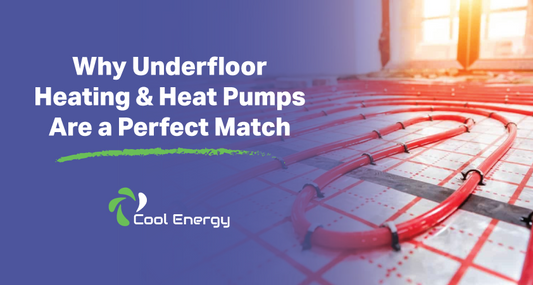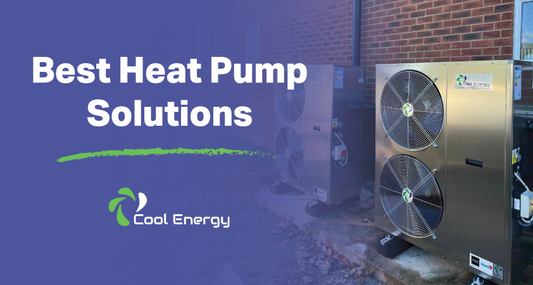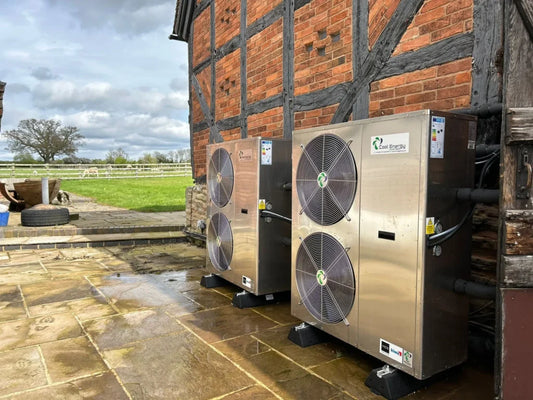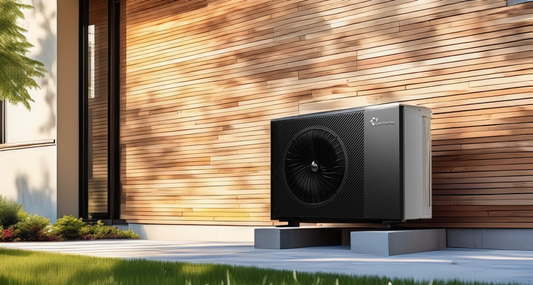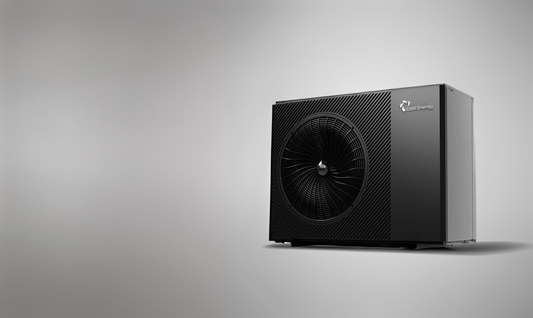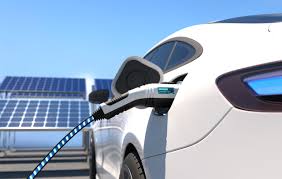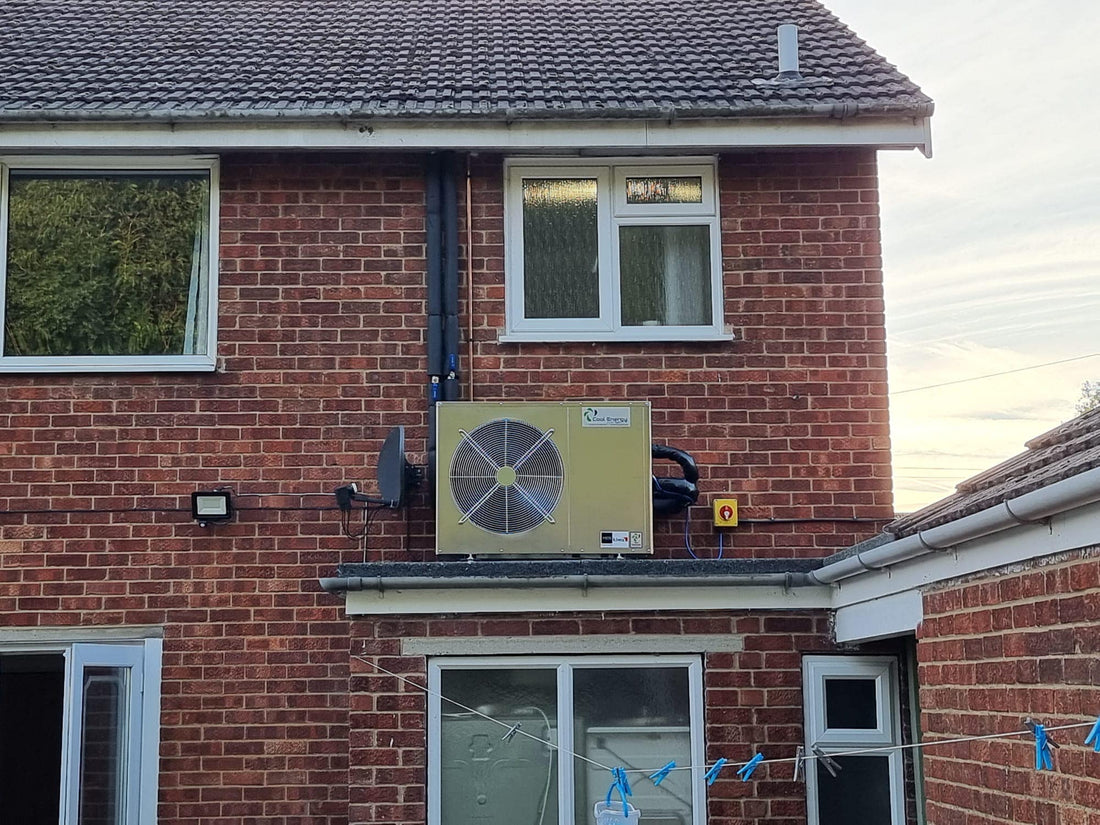
- Installing an air source heat pump usually takes one to five days
- It can cut your carbon footprint by 44%, on average
- The installation process requires electrical and plumbing expertise
Getting an air source heat pump costs less than a gas boiler over its lifetime. And considering the Boiler Upgrade Scheme can now cut £7,500 off air source heat pump costs for homeowners, this is the time to act.
Here’s everything you need to know about how installers will set you up with a new, top-quality air source heat pump.
What is an air source heat pump?
An air source heat pump is a renewable heating system that uses electricity to take warmth from the air outside and uses it to supply you with heat and hot water.
The machine’s refrigerant absorbs warmth from outside and becomes a gas as it heats up beyond -50°C.
The gas is compressed, which results in it warming up due to the pressure increase. It then transfers this heat to your central heating system’s water.
When you’re not using your heating system, you can store the excess fluid in a hot water cylinder.
And because the sun has already partly heated the air, an air source heat pump is able to produce more units of heat than the units of electricity it uses, making it an extremely efficient source of green energy.
How is an air source heat pump installed?
The air source heat pump installation process is painless, provided you hire a professional company with installers who are qualified and certified.
Don’t install an air source heat pump yourself, unless you’re certified in electrical and plumbing work. Any savings you make initially will be eradicated when the system breaks.
We’ve laid out all the steps below that will take you towards the destination of a new, functioning air source heat pump, so you know what your installers are doing.
1. Inspection
The best first step is to ask a company that installs heat pumps to send a heating engineer to assess your home and decide what size of air source heat pump you need.
Some companies will perform this survey for free, while others charge £500 in the form of a non-refundable deposit.
This payment is often removed if you choose the assessing company to carry out the heat pump installation, but either way, it’s incredibly useful to know how to save money on your energy bills.
This process can take up to four hours.
They’ll also take into account if you have underfloor heating, which is an excellent way to spread warmth through your home when you have a heat pump.
All of these considerations will help them work out how much heat is regularly lost from your home. The more heat that’s lost, the bigger the heat pump you’ll need.
To reduce your heat losses and make your home more suitable for a heat pump, the engineer may recommend you get better insulation, bigger radiators, or underfloor heating. They may be able to carry out these improvements for you while installing the heat pump.
Fortunately, many radiators in UK homes are already larger than they need to be for gas heating, which may be perfect for your new heat pump. Generally, most homes will need to replace around one-third of their radiators before installing a heat pump.
2. The outdoor unit
The actual heat pump will then be installed just outside your home, next to one of the external walls.
The heat pump needs easy access to the air, so your installer will choose a spot where nothing blocks it in, then either bolt it to a flat concrete base, or use brackets to attach it to the wall.
This ensures that come rain, hail, or snow, your heat pump will remain steadfast in its position.
3. The indoor unit
The installers will then move inside to set up the other main part of this process: your hot water cylinder.
This storage tank that will hold onto all the hot water you don’t need straight away, allowing you to make full use of all the warmth your heat pump produces.
Your installer will recommend the right size for your home, but as a guide, the average three-bedroom house requires a 200-litre hot water cylinder.
If you have two bedrooms, you can probably settle for a 150-litre unit, while houses with five bedrooms or more will likely need at least 300 litres of capacity.
If you already have a hot water cylinder, it probably won’t be suitable for a heat pump system, as the coil is usually too small to reheat the water as quickly as it should.
4. Connections
Then it’s time to link everything up.
Your installer will connect the external heat pump to the internal hot water cylinder via a control wire, a refrigerant hose, and a condensate drain hose.
They’ll usually have to drill a hole in the wall to feed these through.
The installer will then connect the hot water cylinder to your radiators, and to your underfloor heating if you have it, by installing some pipework.
At some point during this process, your old heating system will need to be disconnected, but the installer will warn you about this in advance, and let you know how long it’ll take. It’s usually a matter of hours.
This part of the installation in particular will make you thankful that you hired installers who know their way around electrical units and plumbing.
How much does air source heat pump installation cost?
Installing an air source heat pump costs around £150 per hour.
With an average installation time of three days, this generally works out to £3,000 overall. The total price of buying and installing an air source heat pump is typically £10,000.
Make sure you get multiple quotes before moving ahead with an installer, to avoid paying well over the odds.
And remember: unless you’re a certified plumber and electrician, don’t do it yourself. The price of installing a heat pump to an inferior standard is likely to be much, much higher in the long term.
Is there any maintenance required afterwards?
Yes – but thankfully, air source heat pump maintenance is a relatively simple task.
You can do your part by keeping the external unit clean and free of debris so the airflow doesn’t get obstructed, and by cleaning the registers with a soft-bristled brush.
Don’t let grass or other plants encroach on the heat pump’s area, and de-ice your machine in winter.
But you should also hire a professional once per year, so they can replace the filters, wipe down the coils and fan blades, and refill the antifreeze.
With very little upkeep, an air source heat pump can last for at least 20 years – much longer than a gas boiler, which typically needs replacing after 10 to 15 years.
Contact us today for more information or to get a quotation on a heat pump system for you.
Email: [email protected]
